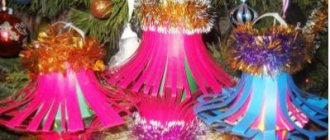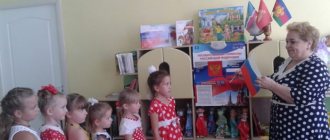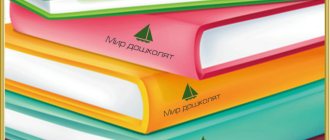Why preparation is important
When children come to school, they experience some stress at first, because the situation changes, the demands placed on them are different, the form of teaching material is completely different, there are new people around. But you have to get used to everything! Therefore, it is important already in the preparatory group to begin teaching children what may be useful to them in primary school. And prepare them for change. It is noteworthy that it is drawing classes that help children perceive new information more easily and quickly. Child psychologists have proven that information presented in a pleasant and kind environment is well absorbed. Drawing promotes all-round development: children not only do something with their hands, but also listen, remember, and apply the acquired knowledge in practice. It is very important that parents support children’s interest in the fine arts, give them new knowledge and topics for exercise. In no case should these be orders to be executed, but rather recommendations and advice. Children do not like and do not accept what is imposed on them, but they like it when attention is paid to their interests. Parents and educators should encourage their children's endeavors and skills in order to stimulate their further development. At the same time, errors also need to be pointed out, but in a soft and correct form.
What kind of technique
This approach allows the child to develop comprehensively. That is, he himself chooses which material to use to bring his idea to life. For example, children often take colored cardboard from which they make appliqués, which also belong to a non-traditional drawing method if they are decorated with paintings. Sometimes children choose oil crayons or wax pencils. They are convenient to draw with, and most importantly, they do not stain your hands or clothes. Although a drawing lesson in a preparatory group is planned by teachers, it is usually completely controlled by the children themselves. They decide how and with what their drawings will be made.
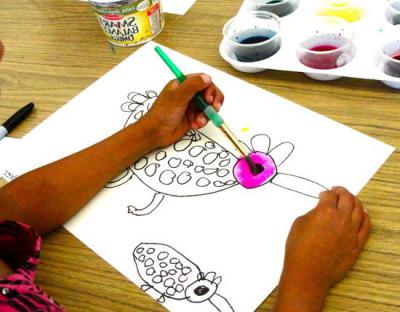
Theme: spring
This theme is very similar to winter, although it naturally has its own characteristics and nuances. Firstly, a drawing lesson in the preparatory group on the theme “Spring” includes several subtopics. Secondly, educators need to additionally prepare various materials for the exercises. What subtopics are usually used:
- what is spring?
- spring in the forest;
- city spring;
- March 8;
- Easter.
What materials are usually prepared by educators:
- why winter is leaving;
- what is drops;
- how green leaves and grass appear;
- what kind of holiday is “March 8th”, why is it celebrated, how do they congratulate mothers, grandmothers, sisters;
- what “Easter” is and everything connected with it.
All this knowledge will certainly be useful to children in the future. In addition, at school they often ask questions about the world around us, natural processes, how and what works in nature. Children who have known this since kindergarten perceive new information much easier, feel more confident in a new environment, and adapt faster.
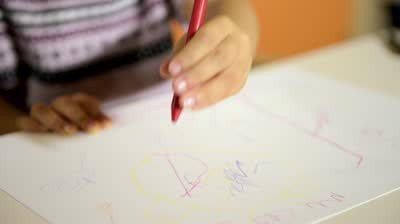
Theme: winter
In December, January and February, teachers usually set just such a topic for classes. Children decide what exactly they want to create on paper. A drawing lesson in a preparatory group on the theme “Winter” usually includes an image of the following elements:
- snowflakes;
- winter forest or nature;
- New Year's houses and decor;
- outdoor games;
- favorite winter games.
What are the kids depicting? Usually these are activities based on the imagination: everyone decides for themselves what is more interesting and closer to them. For example, many people draw sleds or skis, their family on the street, New Year's Eve at home, winter nature. Children love creative freedom! In the preparatory group, children usually already know exactly how to draw this or that element. For example, that a Christmas tree can be depicted with several triangles, and a house consists of other shapes that are familiar to them.

non-traditional drawing technique in the preparatory group
"Municipal budgetary educational institution
Kindergarten "Oronchikan" Zhigansk"
“Methodological development of a lesson in fine arts for a teacher of additional education.”
Kolesova Anna Aleksandrovna - teacher of additional education
Topic: Non-traditional technique of drawing an imprint of the national musical instrument “Khomus” with vegetables
in the pre-school group.
Target:
Develop interest in the creative process, the desire to achieve better results, develop visual creativity in children, using non-traditional drawing techniques.
Expand the understanding of the national musical instrument - khomus; to acquaint with the work of the folk craftsman in making a musical instrument, I.I. Khristoforov.
Tasks:
• Introduce various methods and techniques of non-traditional drawing techniques using various visual materials.
• Instill interest and love for fine art as a means of expressing feelings, relationships, and introducing the world of beauty.
• Monitor the dynamics of the development of creative abilities and the development of the child’s visual skills.
• Create all the necessary conditions for achieving the set goal.
• Develop in children a sense of form, composition, color, rhythm, proportion.
• To develop knowledge, skills, and abilities in students in the field of visual arts.
• Develop a desire to experiment, showing vivid cognitive feelings: surprise, doubt, joy from learning new things.
• Foster hard work and the desire to achieve success through one’s own efforts.
• Introduce children to a new type of visual technique - printing with vegetables. Practice typing.
• Develop a sense of composition, light perception, memory, observation.
Means of expression
: color, spot.
Materials
: Musical instrument khomus, potatoes - cut in half, watercolor paints, gouache, khomus templates printed on paper, a glass of water, a napkin, a brush.
Visual range:
video and slide presentation about the national instrument Jew's harp - khomus.
Musical series:
Listening to the performance of playing the khomus during a lesson on audio recordings, improvisation on the khomus by famous Yakut khomus players.
Preliminary lesson:
Introduction to the musical instrument khomus. Looking at illustrations. A conversation about the varieties of khomus in different countries. Screening of a video with the performance of famous khomus players of the Republic of Sakha (Yakutia).
Dictionary enrichment:
Vargan, khomus.
Progress of the lesson:
Teacher:
Hello guys!
Today we will get acquainted with the technique of drawing a stamp, an impression.
